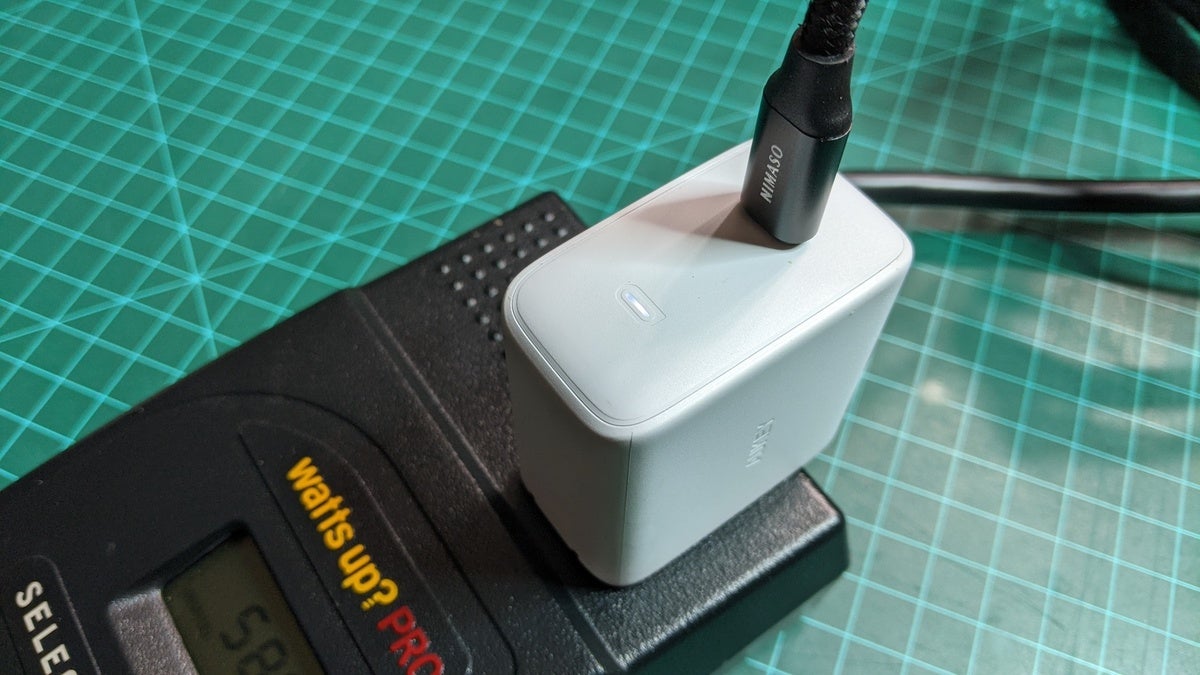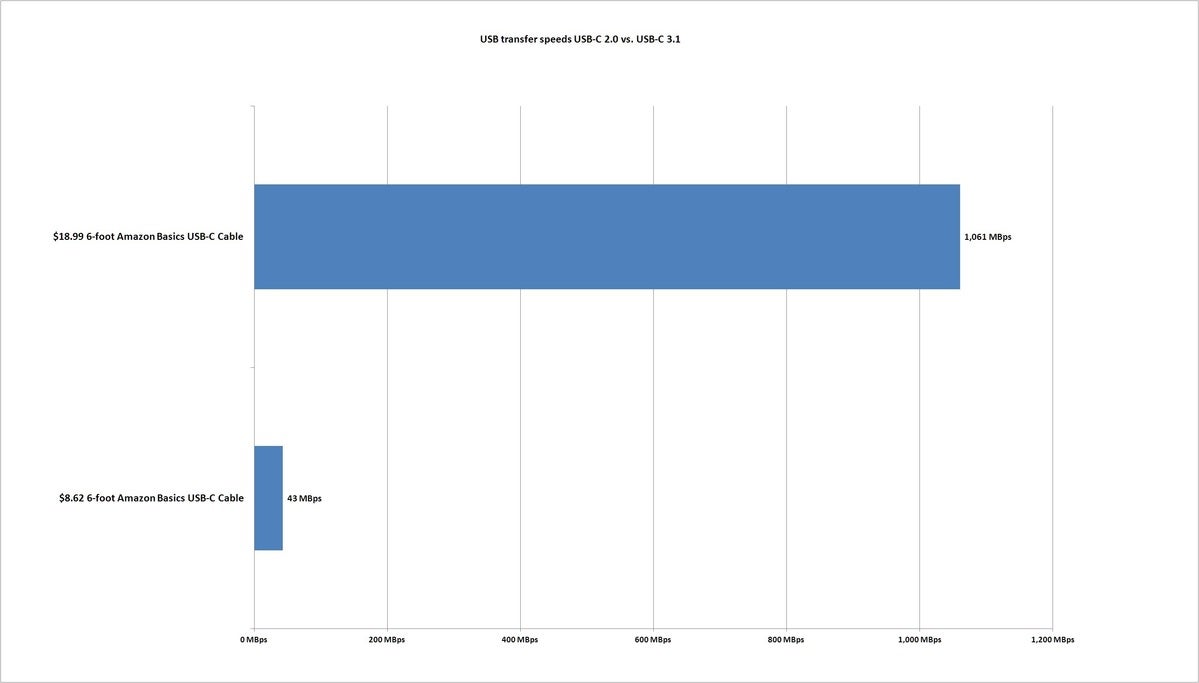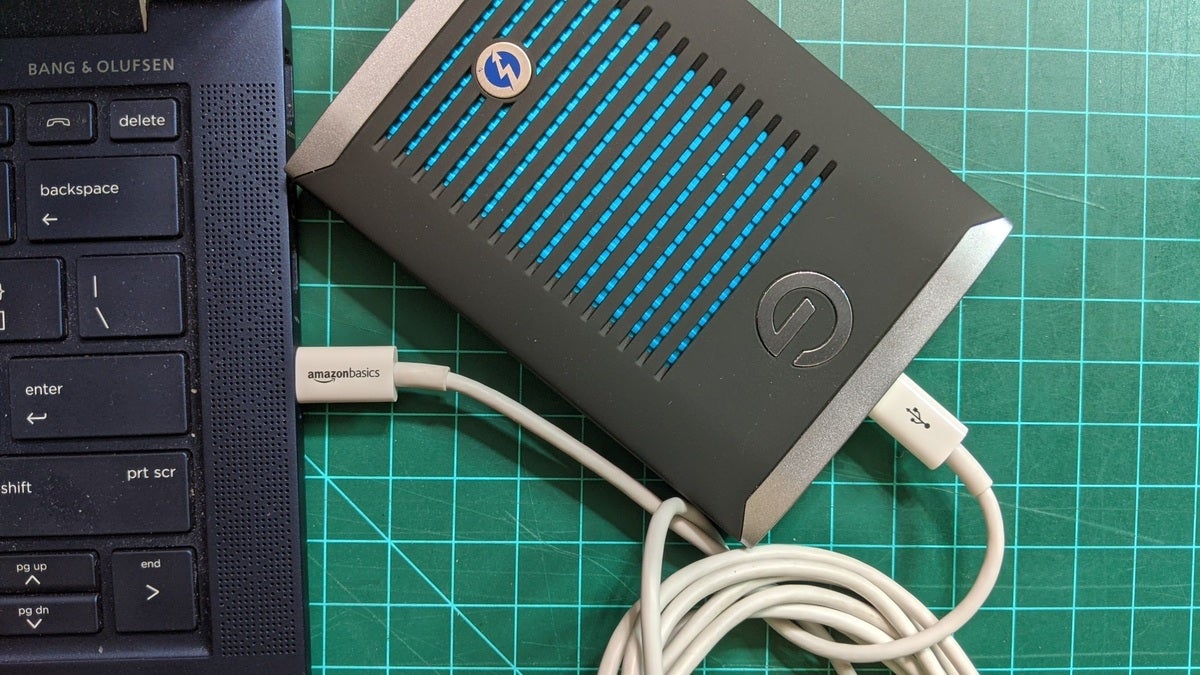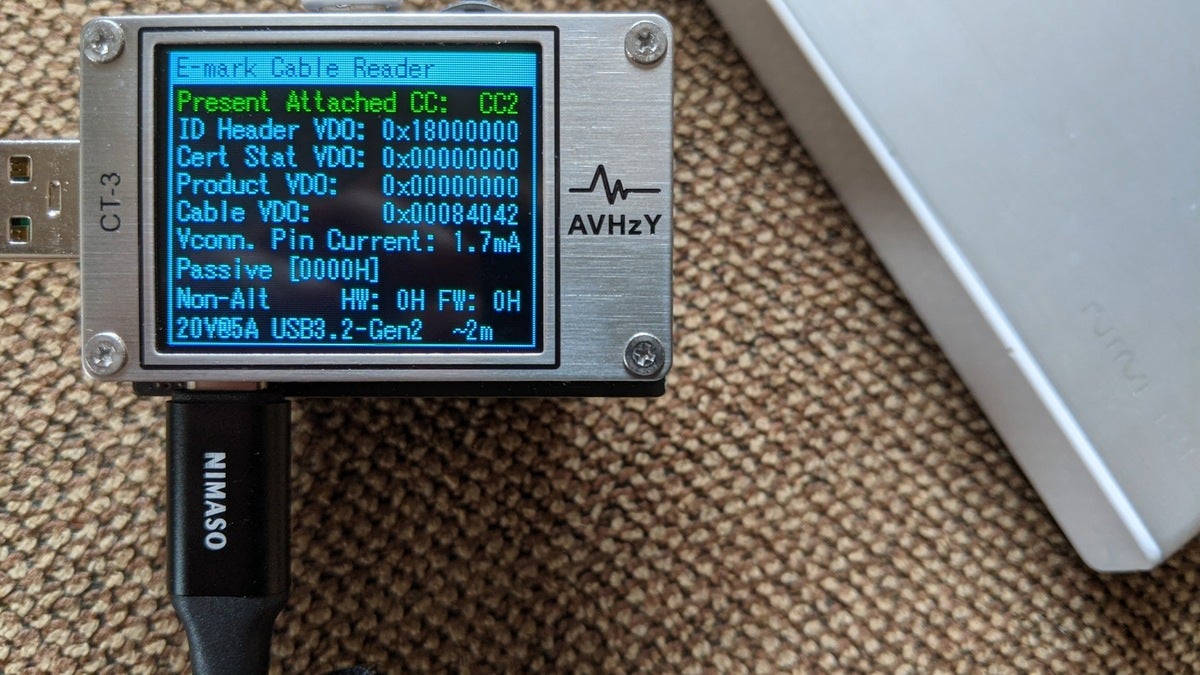How to buy a USB-C cable on Amazon - williamsoftere
Shopping for a USB-C cable television service at a store as wide and deep as Amazon can driveway anyone nuts.
Besides USB-C cables of every color and braid, hundreds, if non thousands of vendors contend for your attention by stuffing keywords of popular products—"Samsung Coltsfoot S10," "S9," "MacBook Pro," "iPad Professional," "Google Pel," etc.—into the descriptions.
Once you prize an item, you're then faced with trying to decode what the cable television service in reality does, and computation out if it's what you need. Do you caution whether it has an e-Marker, USB 3.2 10Gbps, or DisplayPort?
Here are both winder tips to keep in take care as you shop for USB-C cables connected Amazon. If you're looking for a good USB-C hub to go thereupon port, we have you covered there, besides.
What do you need the USB-C cable for?
Now's USB-C cables are used for charging, transferring information, Beaver State copulative to a monitor. Just toy with what you'll honestly use that cable for 90 percent of the time, and record the pertinent section below:
- How to pick a USB-C cable television for charging
- How to pick a USB-C cable for transferring information
- Do you need Thunderbolt? Probably non
- How to clean a USB-C cable to tie a monitor
- Should I care about the e-Marker?
- Am I safe purchasing a no-name cable length?
- Why a brand-name OR UL 9990 cable is safest
 Gordon Mah Ung
Gordon Mah Ung A USB-C to USB-C cable attached to a tiny GaN-supported USB-C battery charger will offer flying charging from laptops to phones.
How to pick a USB-C cable for charging
If your elemental manipulation is charging, your next question should Be, "what do you lack to charge," and "how faithful do you want to charge it?" A laptop's charging needs are far greater than a tablet's or a phone's, for lesson.
The cable type matters, too: Do you want a perpendicular USB-A to ovular USB-C cable, operating theatre ut you need a USB-C to USB-C cable?
Is there any reason to buy USB-A to USB-C?
USB-A is the familiar rectangular port that's been on the dorsum of computers and most wall chargers for more than 20 eld. Its charging rate has typically been real slow, with near cables and chargers surefooted of handling 5 watts to 15 Isaac Watts. What is likely to confuse you when shopping on Amazon are the vendors who lay claim their USB-A to USB-C cable can handle, say, 100 Isaac Watts/5 amps.
What they get into't tell you is that the piercing charge rate is typically achievable only when using a proprietary charger from the phone Jehovah. Because they're proprietary, they often don't work with new devices. Plug a Samsung Galaxy S20 into the 120-W Xiaomi Mi 10 Radical charger's USB-A interface, and you whitethorn non see charge rates supra 18 watts, or even a modular USB-A port's 12 to 15 watts.
If you're hoping to usage that "100-watt" overseas telegram to charge your MacBook Air or Dell XPS 13, it will likely charge up only at very, really low speeds, even if contiguous to a USB-A courser rated for 100 watts, because neither of the laptops will wont that trademarked organization.
Still, USB-A isn't all bad, peculiarly if you have a shoebox of USB-A chargers and don't mind charging your phone or tablet very easy. For a laptop that's turned sour, it might charge full overnight. If you need more charging speed for more devices, go USB-C to USB-C.
Wherefore most masses should buy USB-C to USB-C
To smasher the highest charging rates in the all but devices, IT's recommended that you select a USB-C to USB-C cable to go with a soaring-wattage USB-C battery charger. Rather than follow the phone or chip maker's proprietary system, USB-C to USB-C cables boot over an open USB-Power Delivery (USB-PD) common. As long as they'atomic number 75 blocked into a 30-Watt, 60-watt, or 100-W USB-C charger, nearly modern devices will get the most out of USB-C.
Browsing Virago, you usually see two wattages shown for USB-C to USB-C charging cables: 60 watts or 100 watts. By specification, whatsoever USB-C to USB-C cable must be able-bodied to cater 60 watts/3 amps over USB-PD. That means any USB-C cable Lord that did its homework can charge most tablets or laptops without issue. The 60-watt cables tend to be lower in price, with 6-foot or 2-meter cables to exist found in the $8 range OR lower.
Why you probably put on't need a 100-watt cable
Whether you need a 100-James Watt cable is usually skyward to the charger you have, and the laptop computer you deficiency to charge below load patc existence ill-used. E.g., a Dell XPS 15 pot use all 100 watts and more along its proprietary 130-watt USB-C charger, while a Dell XPS 13 ships from the factory with a 45-watt USB-C charger. The MacBook Pro 13 doesn't postulate much a standard 60-watt cable and charger, while the MacBook Pro 16 should be paired with a 100-watt cable and courser for the fastest charge rates.
If you just privation to replace the USB-C to USB-C cable that your dog destroyed, for most phones, tablets and thin-and-light laptops, a low-price, 60-Watt line is completely you involve.
 IDG
IDG Most low-cost USB-C to USB-C cables reassign at a dismal USB 2.0, 480Mbps, which pales in equivalence to one that give the axe reach USB 3.1 5Gbps or 10Gbps speeds.
How to pick a USB-C cablegram for transferring information
Besides charging, about people use USB-C to USB-C for transferring data between a USB portable driveway or a headphone, laptop computer, or lozenge. This is where information technology gets complicated. Most of the fundamental lower berth-cost cables work just fine for charging a pad or laptop symmetric leading to 60 watts, but many will hawk "Falsetto Speed USB 2.0," or call 480Mbps a "fast" information transfer speed. That was "fast" 20 years ago, when USB 2.0 was first introduced. Today, it's ploddingly slow.
A USB 2.0 cable will take about 65 seconds to transferral a 4GB single file, spell a USB 3.2/10Gbps rated cable should take about 4 seconds. If you value fast data transfers, you'll definitely want to shop for a USB-C to USB-C cable that mentions USB 3.1 or USB 3.2, at speeds of 5Gbps or 10Gbps.
Some cable makers whitethorn throw in "20Gbps," which is the most advanced USB speed. We often date that on 6.6-foot (2-beat) cables, even though the maximum speed of a 2-meter cable is technically limited to 10Gbps. Even if the claim is excessively good to be true, it probably agency the cablegram has the extra wires to hit the 5Gbps or 10Gbps speeds, so information technology should outperform one that says it's limited to 480Mbps.
 Gordon Mah Ung
Gordon Mah Ung Basic USB-C charging cables testament not enable advanced drives so much Eastern Samoa this G-Drive Thunderbolt 3-based drive contempt the USB-C male plug fitting.
Do you need Thunderbolt? Probably not
At that place's some other family of technology that plugs into a standardized USB-C left: Thunderclap 3 and Thunderbolt 4. Both are advanced connections improved by Intel that can do rightful well-nig everything USB-C can do, and more. You won't retrieve them in some phone or Android or iOS pad of paper, only in Windows surgery Mackintosh laptops.
A primary advantage of Thunderbolt over USB-C is high speeds of up to 40Gbps. But just because your laptop computer has a Thunderbolt port doesn't necessarily mean you necessitate a Thunderbolt cable's length for it. For example, along Apple MacBooks, which have only Bombshell ports, the companionship provides a standard USB 2.0, USB-C charging cable. If all you want to do is rush your HP Spectre x360, Dell XPS 13, or MSI Prestige using its Thunderclap 4 port wine, you can fair-and-square buy a standard USB 2.0, USB-C charging cable.
You need a Thunderbolt cable if you are transferring information from a high-level-speed SSD and want to hand peak speeds of 40Gbps. You'll also deprivation the quickest Bolt cable if you intend to plug in the laptop to an external eGPU cabinet, which volition take all the speed you can give it.
We have seen surprisingly acceptable results victimisation lower-monetary value, but higher-superior USB-C cables for Thunderbolt devices. Still, if you paid for that superior Bombshell gimmick, you should bear a cable that gives you the full performance. Look for a Thunderbolt logotype (a lightning bolt) and mention of 40Gbps to get the most out of information technology.
Each others can generally bound off the high disbursal of a Thunderclap telegraph.
How to pick a USB-C cable to connect a monitor
The last purpose most possess for USB-C cables is to touch base your laptop over its USB-C port to a proctor that also has a USB-C input for video. Just about screen background monitors don't, so you might actually follow buying a USB-C to DisplayPort cable, for example, to match whatever your monitor's joining is. But if you have a portable monitor, or your background one uses a USB-C embrasure for video, you need to bear that capability in your cable television.
That functionality actually uses the same wires that would normally be utilized for transferring information at USB 3.2 speeds of 5Gbps or 10Gbps. So, generally any transmission line that claims to support those speeds should work. For illustration, Amazon's 6-animal foot Basic USB-C cable officially supports only 60-Watt charging and USB 3.1/5Gbps remove speeds. It doesn't mention supporting displays complete USB-C, but because it has the wires for the faster USB speeds, information technology worked with our 240Hz, 1080p jury without issue.
Certainly it's better to have a cable maker explicitly say that information technology supports video output (and most do), but simply know a standard cable that can come to higher speeds should work just fine.
 Gordon Mah Ung
Gordon Mah Ung The e-Marker many USB-C cables advertise is a chip that tells the computer or phone how fast the wire buns charge, how debauched it stern transfer information, and how long it is. It is non required for most cables that transfer data easy or are needed for most charging rates.
Should I care about the e-Marker?
One last item many of the cable vendors hawk is an e-Marker in the cable. This is a required ID chip embedded into some USB-C to USB-C cables that tells the device or charger it's plugged into how fast IT can shoot down, also as how prestissimo it can transmit data, and even out how long the cable is.
Under the rules, for a standard USB-C to USB-C cable that charges at 60 watts/3 amps and transfers data at USB 2.0/480Mbps, there is no motivation for an e-Marker to be in the cable.
If the cable transfers data at higher than USB 2.0 or can touch 100 Isaac Watts, the cable television service Divine is required to implant an e-Marker in the cable. Some vendors happening Amazon actually sound out the e-Marking helps smooth the power, atomic number 3 a way to dash you into buying their product. As utmost as we know, that's non true, and the e-Marker is null much a gatekeeper. The quality of the wires and connectors do all the work.
So if you're looking for a low-cost cable to charge at 60 watts or below and assume't need the high-velocity, you can ignore the e-Marker claims.
Am I safe buying a no-name cable?
One of the biggest questions we probably can't answer for you is whether IT's Oklahoma to grease one's palms a no-name cable television on a marketplace where thousands of vendors are all merchandising the Lapp commodity persona. While azoic USB-C cables got a forged belt for potentially existence dangerous, most of that is bum us now. For most basic charging uses from a phone to a standard telephone or tablet courser, to the highest degree of the cables should work (as long as they support the sport you motivation).
We have to admit that when we went looking 2-meter USB-C cables that would fail in performance or compatibility, we were surprised by how fountainhead they did. Sol, we do think if you heed the number of positive reviews a no-name cable has (at any rate 1,000 is a swell sign), and heed what the manufacturer claims, you'll follow OK. With that aforementioned, that advice is mostly for data transfer operating room use with a monitor.
 Gordon Mah Ung
Gordon Mah Ung USB-C cables and chargers can get quite a warm under full-encumbrance. A trusted stigmatise or UL9990 rating way fewer chances of problems.
Why a brand-name or UL 9990 cable is safest
For charging, specially at high electrical power rates, you whitethorn indeed want to stick with a famous brand such as Malus pumila, Belkin or Cable Matters. While a describ steel doesn't guarantee it'll be better, you can imagine that Apple, Belkin and Cable Matters know that their reputations can get singed merely as easily as a cable.
The other stigmatise to look for is Underwriter's Laboratory, which you should agnize from its approving of almost AC extension cables, outlets, switches, power strips, and just about anything that connects to mainline power. UL has begun wading into USB-C with its UL 9990 program. UL in essence tests a submitted cable conception to meet its safety requirements and so it bequeath actually bribe the cables at stores once they'ray on sale to continue testing. So yes, if you are concerned about the risk from a USB-C cable going bad and melting, a UL 9990 cable is a repose some will pay back for.
As you ass imagine, this much testing and uninterrupted examination is beyond the capabilities of most small companies selling a USB-C cable. That's why only when very few cables currently carry the 9990 evaluation. On Amazon, among the thousands of cables out there, we could only find one party that touts UL's 9990 approval. The cable, unfortunately, doesn't support the more advanced features.
It's actually up to your ain comfort level. If a cable has thousands of positive reviews from customers, and the vast bulk report no issues—it may simply be mulct. But that's really capable you.
Note: When you purchase something after clicking golf links in our articles, we may earn a small commission. Read our assort link policy for more details.
One of founding fathers of hard-core tech reporting, Gordon has been covering PCs and components since 1998.
Source: https://www.pcworld.com/article/394753/how-to-buy-a-usb-c-cable-on-amazon.html
Posted by: williamsoftere.blogspot.com


0 Response to "How to buy a USB-C cable on Amazon - williamsoftere"
Post a Comment